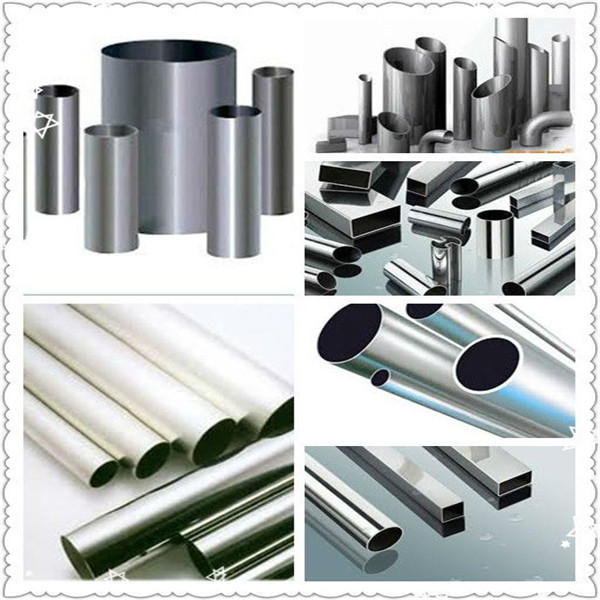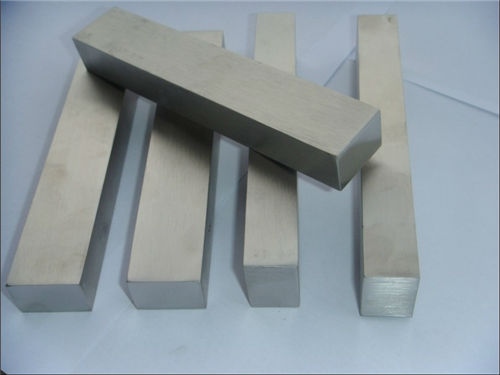- EN 441 stainless steel flat bar Hot rolled / cold drawn
- STS304L stainless steel round bar
- Stainless Steel Hot Rolled Flat Bar
- ISO Stainless Steel Angle Bar
- straight cut stainless steel wire sus304
- 304 bright soft annealed stainless steel wire
- 304L bright soft annealed stainless steel wire
- Stainless Steel Wire
- AISI316 stainless steel round pipe/tube
- 300 Series grade stainless steel round pipe
- AISI/SUS stainless steel pipe/tube cold drawn
- ASTM A249 stainless steel round pipe

Typical application of stainless steel products
Inquiries : 0 - 2015/9/24 9:30:39
Stainless steel is a versatilematerial. First used for cutlery it soon found its way into the chemicalindustry because of its corrosion resistant characteristics. Today corrosionresistance is still of great importance and slowly bust steadily the mechanicalcharacteristics of the material are being recognized.. It is material thatkeeps on finding its way into new applications on a close to daily bases. Belowyou will find a number of applications where stainless steel has proven itselfthrough many years of reliable service .
Cutlery andkitchenware
The most wellknown application stainless steels is probably for cutlery and kitchenware. Thefinest cutlery uses specially produced stainless steel 410 and 420 for theknives and grade 304 (18/8 stainless, 18% chromium 8% nickel) for the spoonsand forks. The different grades used such as 410/420 can be hardened andtempered so that the knife blades will take a sharp edge, whereas the moreductile 18/8 stainless is easier to work and therefore more suitable forobjects that have to undergo numerous shaping, buffing and grinding processes.
Chemical,processing and oil & gas industries
Probably themost demanding industries that use stainless steels are the chemical,processing and oil & gas industries have created a large market forstainless tanks, stainless steel pipes, pumps and valves as well. One ofthe first major success stories for 304 stainless steel was the storageof dilute nitric acid as it could be used in thinner sections and was morerobust than other materials. Special grades of stainless have been developed tohave greater corrosion resistance at a broad range of different temperatures.These are used in desalination plants, sewage plants, offshore oilrigs, harboursupports and ships propellers.

Powergeneration
Stainlesssteels andother corrosion resistant alloys are extensively used in the power generationindustry to combat corrosion, particularly at elevated temperatures. Inparticular nickel alloys are used for high temperature strength and oxidationresistance in fossil fuelled power plants. Nickel alloys and other stainlesssteels are also extensively used in flue gas desulfarizationunits.
Food production
Also largeamounts of stainless steel are used in food production and storage. Themost commonly used grades are 304 and 316 stainless steel. In general,304 is basically the workhorse grade while 316 is used in harsher environments.An important reason fur using stainless steels is not so much the noncorrosiveof the food itself as well as the fact that the use of stainless allows forfaster and more efficient cleaning.
Architecture,building and construction
Architecture,building and construction is a growing market as many modern buildings use stainlesssteels for cladding, roofing and facades. Another thing is that the lowmaintenance cost and anti-vandal characteristics of stainless provides agrowing market in public transport, ticket machines and street furniture.Stainless steels are used for construction purposes, as well. When reinforcedconcrete first started to be used it was considered that the carbon steel usedwould not rust, as cement, obviously derived from limestone, is alkaline.However, constantly using grit salt on bridges can change the pH to acidicthereby rusting the steel which expands and cracks the concrete. Stainlesssteel reinforcing bar, although initially expensive, is proving to havevery good life cycle costing characteristics.

Medicalapplications
Especiallyclean melted stainless is used for medical implants and artificial hips. Agreat deal of medical equipment - such as orthopaedic beds, cabinets andexamination machines - is made as standard from stainless because of itshygienic and easy-clean qualities. Pharmaceutical companies use stainless forpill funnels and hoppers and for piping creams and solutions.
Automotive
Cars are makingincreasing use of stainless steel, primarily for exhaust systems (grade409) and catalytic converters, but also for structural purposes. With greaterattention being made to achieving low long term maintenance costs, lessenvironmental impact and greater concern with life cycle costs, the market for stainless steel continues to improve.

